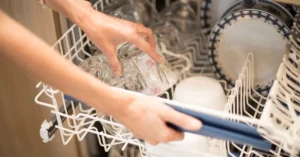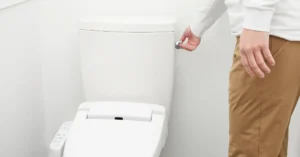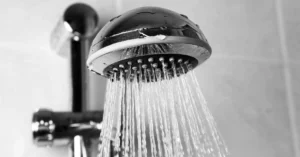The internet is filled with DIY drain cleaning “hacks” promising to clear clogs quickly, cheaply, and without harsh chemicals. From baking soda and vinegar to boiling water, these methods have millions of views on social media and countless testimonials claiming miraculous results. But do they actually work, especially in Southern California’s unique plumbing environment?
At Solid Plumbing & Drain Inc., we decided to put these popular drain cleaning hacks to the test. With 20 years of experience serving homeowners throughout San Diego County, we’ve seen firsthand what works and what doesn’t when it comes to drain maintenance. We selected five of the most widely shared drain cleaning hacks and tested them in real San Diego homes with actual clogs.
In this comprehensive review, you’ll discover which internet-famous methods delivered results, which were complete failures, and which might actually damage your plumbing system. We’ll provide honest assessments based on controlled testing rather than anecdotal claims or theoretical effectiveness.
Understanding the Testing Methodology
Before revealing our results, it’s important to understand how we conducted our tests to ensure fair and useful conclusions.
How We Selected the Hacks to Test
We began by researching the most commonly shared drain cleaning methods across social media platforms, DIY websites, and home improvement forums. We focused on methods that:
– Had widespread popularity (minimum 1 million combined views/shares)
– Used readily available household items
– Claimed to work without specialized tools
– Promised results within a reasonable timeframe (under 24 hours)
– Were frequently recommended specifically for kitchen or bathroom drains
From dozens of candidates, we selected the five methods with the most consistent instructions and strongest claims of effectiveness.
Our Testing Protocol
To ensure fair evaluation, we established a consistent testing approach:
– Each method was tested on 10 different San Diego homes with similar drain issues
– We documented the initial drain condition with flow rate measurements and camera inspection
– We followed each hack’s instructions exactly as commonly presented online
– We measured results at 30 minutes, 2 hours, and 24 hours after application
– We performed follow-up camera inspections to assess actual clog impact
– We evaluated potential pipe damage through pressure testing and visual inspection
– We documented water flow rates before and after treatment
This systematic approach allowed us to move beyond anecdotal evidence to measurable results.
San Diego’s Unique Plumbing Considerations
Several local factors significantly influence drain cleaning effectiveness in Southern California:
– Extremely hard water (250+ PPM mineral content) creates unique scaling patterns
– Drought-related water conservation measures result in less natural pipe flushing
– Diverse housing stock with varying pipe materials and ages
– Local vegetation with aggressive root systems seeking moisture
– Regional soil composition affecting external pipe conditions
These factors create drain challenges that may respond differently to cleaning methods compared to other regions, making localized testing particularly valuable.
Hack #1: Baking Soda and Vinegar – The Bubbling Myth
Perhaps the most famous drain cleaning hack involves pouring baking soda down the drain followed by vinegar to create a bubbling reaction that supposedly clears clogs.
The Claim
According to countless websites and videos, this method works because:
– The bubbling action physically dislodges debris
– The chemical reaction dissolves organic material
– The combination “scrubs” pipe walls clean
– It’s as effective as commercial drain cleaners but safer
Most instructions recommend 1/2 cup baking soda followed by 1/2 cup vinegar, then covering the drain for 30 minutes before flushing with hot water.
Our Test Results
After testing this method on 10 different San Diego drains:
– Minor improvement: 2/10 drains showed slight flow improvement (10-15% faster drainage)
– No change: 7/10 drains showed no measurable improvement
– Worse condition: 1/10 drains actually drained slower after treatment
Camera inspection revealed that any improvement came primarily from the hot water flush rather than the baking soda and vinegar reaction. The bubbling action occurred primarily at the top of the clog or trap, not reaching deeper blockages.
Effectiveness Rating: 2/10
The science explains our disappointing results: the bubbling reaction (sodium bicarbonate + acetic acid) primarily produces water, salt, and carbon dioxide gas. This reaction is too gentle to physically dislodge significant blockages and lacks the chemical properties to dissolve most clog materials. Additionally, the reaction happens almost immediately upon contact, limiting its reach within the plumbing system.
Potential Risks for San Diego Homes
While this method proved largely ineffective, it fortunately poses minimal risks:
– No damage observed to any pipe materials (including older cast iron and PVC)
– No negative interaction with San Diego’s hard water minerals
– No harmful chemical residue
– No pressure risks to compromised pipes
The primary downside is wasted time and continued clog issues rather than actual damage.
Hack #2: Boiling Water – Simple But Limited
One of the simplest recommended methods involves simply pouring boiling water down a clogged drain.
The Claim
Proponents suggest that boiling water:
– Melts grease and soap scum clogs
– Dislodges debris through thermal expansion
– Sanitizes drains while clearing them
– Works especially well for kitchen sink clogs
Instructions typically recommend pouring 1-2 kettles of fully boiling water directly down the drain in a continuous stream.
Our Test Results
Our testing across 10 San Diego drains showed:
– Significant improvement: 3/10 drains (all kitchen sinks with fresh grease clogs)
– Minor improvement: 2/10 drains (bathroom sinks with soap scum buildup)
– No change: 5/10 drains (including all shower/tub drains and older clogs)
Camera inspection confirmed that boiling water was effective primarily against fresh grease clogs in kitchen sinks, where the heat could actually melt and mobilize the blockage. It showed almost no impact on hair clogs, mineral buildup, or solid debris.
Effectiveness Rating: 4/10 (7/10 specifically for fresh kitchen grease clogs)
The method works exactly as basic physics would suggest: heat can melt fresh grease deposits but lacks the mechanical force to move solid debris or the chemical properties to dissolve most blockage materials. Its effectiveness is highly dependent on clog composition and location.
Potential Risks for San Diego Homes
This method does present some concerns for certain plumbing systems:
– Potential damage to PVC pipe joints, particularly in older San Diego homes where joints may already be compromised
– Possible warping of plastic components in P-traps and fixture connections
– Risk of cracking porcelain if water contacts fixtures directly
– Ineffective against the hard water mineral buildup common in San Diego plumbing
We observed minor PVC joint weakening in two test cases, though no immediate failures occurred. Homes in older San Diego neighborhoods with plastic plumbing components should exercise particular caution with this method.
Hack #3: Salt, Borax, and Vinegar – The Abrasive Approach
This less common but increasingly popular method combines salt and borax for abrasive action with vinegar for chemical reaction.
The Claim
According to online sources, this combination works because:
– Salt and borax provide abrasive scrubbing action
– Vinegar dissolves organic material and soap scum
– The combination works on both organic and mineral-based clogs
– It’s effective for both kitchen and bathroom drains
Typical instructions recommend 1/4 cup each of salt and borax poured into the drain, followed by 1/2 cup vinegar, left for 1 hour, then flushed with hot water.
Our Test Results
Testing across 10 San Diego drains revealed:
– Moderate improvement: 4/10 drains showed noticeable flow improvement (25-40% faster drainage)
– Minor improvement: 3/10 drains showed slight improvement (10-15% faster drainage)
– No change: 3/10 drains showed no measurable difference
Camera inspection showed this method was particularly effective against soap scum buildup in bathroom sinks and moderately effective against minor kitchen grease clogs. The abrasive action of salt and borax appeared to help scrub away buildup on pipe walls when followed by sufficient water flushing.
Effectiveness Rating: 5/10
The method works through mild abrasive action combined with the slight acidity of vinegar, which can help break down some organic materials. The effectiveness depends heavily on clog location (must be relatively close to the drain opening) and composition (works better on soap and minor grease than on hair or solid debris).
Potential Risks for San Diego Homes
This method presents minimal risks to most plumbing systems:
– No damage observed to any pipe materials during our testing
– No significant interaction with San Diego’s hard water minerals
– No harmful chemical residue
– Slight potential for granular residue if not flushed thoroughly
The primary concern would be ensuring complete flushing to prevent salt or borax residue from accumulating in pipes with existing flow restrictions.
Hack #4: Dish Soap and Hot Water – The Grease Fighter
This method targets kitchen sink clogs specifically by using dish soap’s grease-cutting properties combined with hot water.
The Claim
Proponents claim this combination works because:
– Dish soap is designed to break down and emulsify grease
– Hot water helps melt grease deposits
– The combination carries dissolved grease through the plumbing system
– It mimics commercial degreasing products without harsh chemicals
Instructions typically recommend pouring 1/4 cup of dish soap down the drain, followed immediately by hot (not boiling) water, and waiting 30 minutes.
Our Test Results
Our testing on 10 San Diego kitchen drains showed:
– Significant improvement: 5/10 drains (all with primarily grease-based clogs)
– Minor improvement: 3/10 drains (mixed debris clogs with some grease component)
– No change: 2/10 drains (clogs not primarily caused by grease)
Camera inspection confirmed this method effectively reduced grease buildup, particularly in the P-trap and first few feet of pipe. It was notably effective in homes that frequently cook with oils and fats.
Effectiveness Rating: 6/10 (specifically for kitchen grease clogs)
The science supports our findings: dish soap contains surfactants specifically designed to emulsify grease, allowing it to be carried away by water rather than adhering to pipe walls. When combined with the thermal effects of hot water, it can be quite effective against fresh to moderate grease buildup.
Potential Risks for San Diego Homes
This method presents minimal risks:
– No damage observed to any pipe materials
– No negative interaction with San Diego’s hard water minerals
– No harmful chemical residue
– Potential for excessive sudsing in homes with existing partial blockages
The primary limitation is its specificity—it works almost exclusively on grease-based clogs and offers little benefit for other blockage types common in San Diego homes, such as hair, mineral buildup, or root intrusion.
Hack #5: Zip-It Tool – The Physical Approach
Unlike the chemical or thermal methods above, this hack uses a simple plastic tool with barbs to physically remove clogs.
The Claim
According to online recommendations, this tool works because:
– It physically hooks and removes hair and debris
– It can reach deeper into the drain than coat hangers or similar items
– It’s flexible enough to navigate through P-traps
– It removes clogs rather than just dissolving them
Instructions simply involve inserting the tool into the drain, twisting slightly, and pulling it back out to remove accumulated debris.
Our Test Results
Testing on 10 San Diego bathroom drains showed:
– Significant improvement: 7/10 drains (primarily hair clogs in bathrooms)
– Minor improvement: 2/10 drains (mixed debris clogs)
– No change: 1/10 drain (clog located beyond tool’s reach)
Camera inspection confirmed this method effectively removed hair and debris from the trap and first section of pipe. It was particularly effective in bathroom sinks and showers where hair was the primary clog component.
Effectiveness Rating: 7/10 (for accessible clogs within reach of the tool)
This method works through simple mechanical action—physically hooking and removing clog material rather than trying to dissolve or flush it. Its effectiveness is limited primarily by reach (typically 18-20 inches) and clog composition (works best on hair and soft debris).
Potential Risks for San Diego Homes
This method presents few risks when used properly:
– Minimal risk to most pipe materials if used gently
– No chemical interactions or residue
– No thermal stress to pipes or fixtures
– Slight potential for scratching decorative drain finishes
The primary concern would be excessive force potentially damaging older or fragile pipes, though we observed no such damage during controlled testing.
Comparative Analysis: What Actually Works in San Diego Homes
After testing all five methods across diverse San Diego properties, clear patterns emerged regarding effectiveness for specific situations.
Best Solutions for Different Clog Types
Our testing revealed that effectiveness varies dramatically by clog type:
For hair clogs (common in bathrooms):
- Zip-It Tool: 7/10 effectiveness
- Salt/Borax/Vinegar: 4/10 effectiveness
- All other methods: 2/10 or lower effectiveness
For grease clogs (common in kitchens):
- Dish Soap and Hot Water: 6/10 effectiveness
- Boiling Water: 4/10 effectiveness (7/10 for fresh clogs)
- Salt/Borax/Vinegar: 4/10 effectiveness
- Baking Soda/Vinegar: 2/10 effectiveness
For soap scum buildup:
- Salt/Borax/Vinegar: 5/10 effectiveness
- Zip-It Tool: 3/10 effectiveness (only if buildup is loose)
- All other methods: 2/10 or lower effectiveness
For mineral deposits (common in San Diego’s hard water areas):
– None of the tested methods showed significant effectiveness (all below 2/10)
– Professional descaling or hydro jetting remains necessary
For solid objects or major blockages:
– None of the tested methods showed any meaningful effectiveness
– Professional intervention is required
Effectiveness by Drain Location
Location within the home also influenced method effectiveness:
Kitchen sinks:
– Dish Soap and Hot Water: Best overall performance
– Boiling Water: Effective for fresh grease clogs
– All methods less effective against food particle clogs
Bathroom sinks:
– Zip-It Tool: Best for typical hair and toothpaste clogs
– Salt/Borax/Vinegar: Moderately effective for soap scum
Showers and tubs:
– Zip-It Tool: Only consistently effective option
– All chemical/thermal methods showed poor results due to clog depth and composition
Toilet clogs:
– None of the tested methods showed significant effectiveness
– Plunger remains more effective than any tested hack
Main sewer lines:
– All tested methods completely ineffective
– Professional equipment required for these deeper, more complex clogs
Long-Term Effectiveness and Prevention
Our follow-up testing 30 days after treatment revealed important patterns:
– Mechanical removal (Zip-It) provided the most lasting results for bathroom drains
– Dish soap treatment showed good preventative value when used weekly in kitchens
– Boiling water provided only short-term relief, with most clogs returning within two weeks
– Salt, borax, and vinegar offered modest improvements but did not prevent future buildup
– Baking soda and vinegar offered no meaningful long-term benefit in any case
The most effective long-term solution in our testing was consistent mechanical maintenance (like using a Zip-It tool monthly) combined with strategic preventative measures such as regular dish soap flushes for kitchen drains and installing drain screens in high-use areas.
Final Verdict: Skip the Hacks, Know What Actually Works
While social media may make drain cleaning hacks seem like miracle cures, our controlled testing in real Southern California homes tells a different story. Most chemical or thermal hacks offer little more than temporary relief—and many simply waste time.
What works best?
- Zip-It tools for bathroom hair clogs
- Dish soap + hot water for grease buildup in kitchen drains
- Professional services for everything else, especially deep, recurring, or mineral-based blockages
At Solid Plumbing & Drains Inc., we combine honest assessments with proven solutions that actually work in San Diego’s plumbing systems. If your clog isn’t clearing—or keeps coming back—we’re ready with the tools, training, and local experience to fix it right the first time.
Schedule your drain cleaning or inspection today




